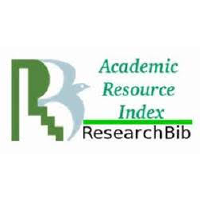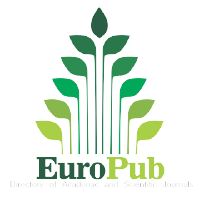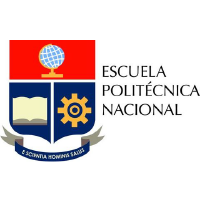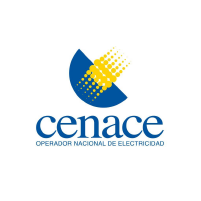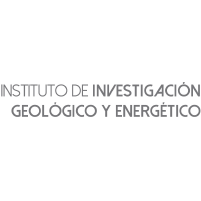Parámetros para el Proceso de Molienda en Molinos Verticales Usando Métodos de Optimización
Parameters for the Grinding Process in Vertical Mills Using Optimization Methods
Cómo citar
Descargar cita
Mostrar biografía de los autores
Artículos similares
- Alex Mullo, José Reinoso, Marlon Chamba, Carlos Lozada, Análisis y Caracterización de la Calidad de Energía utilizando Minería de Datos , Revista Técnica "energía": Vol. 22 Núm. 1 (2025): Revista Técnica "energía", Edición No. 22, ISSUE I
- Joffre Constante, Augusto Riofrío, Aharon De La Torre, Jaime Cepeda, Metodología para Modelación Estacionaria y Dinámica del S.N.I en HYPERsim, Aplicación del Modelo en Análisis de Transitorios Electromagnéticos para Sistemas de 500 kV , Revista Técnica "energía": Vol. 16 Núm. 2 (2020): Revista Técnica "energía", Edición No. 16
- Diego Lojano, Juan Palacios, Flujo Óptimo de Sistemas Eléctricos de Potencia con Consideraciones Ambientales , Revista Técnica "energía": Vol. 21 Núm. 2 (2025): Revista Técnica "energía", Edición No. 21, ISSUE II
- Wilson Sánchez, Diego Echeverría, Santiago Chamba, Andrés Jacho, Carlos Lozada, Despacho Económico de Energía de la Microrred en las Islas Galápagos Utilizando la Plataforma SimSEE , Revista Técnica "energía": Vol. 21 Núm. 1 (2024): Revista Técnica "energía", Edición No. 21, ISSUE I
- Andrés Pereira, Roberth Saraguro, Carlos Quinatoa, Evaluación de Pérdidas de Potencia Activa en el Sistema Eléctrico de la Empresa eléctrica Quito (EEQ) Aplicando un Algoritmo de Optimización , Revista Técnica "energía": Vol. 21 Núm. 1 (2024): Revista Técnica "energía", Edición No. 21, ISSUE I
- Morayma Muñoz, Napoleón Padilla, Grace Morillo, Marco Rosero, Electrocoagulación como Alternativa Sostenible para el Tratamiento de Efluentes de Refinería: Aplicación en Refinería Esmeraldas , Revista Técnica "energía": Vol. 22 Núm. 1 (2025): Revista Técnica "energía", Edición No. 22, ISSUE I
- Alex Villamarín Jácome, Miguel Saltos, Juan Echever, Dimensionamiento Óptimo de Sistemas Fotovoltaicos y Baterías en Entornos Residenciales para Reducir la Dependencia de la Infraestructura Eléctrica Centralizada , Revista Técnica "energía": Vol. 21 Núm. 2 (2025): Revista Técnica "energía", Edición No. 21, ISSUE II
- Josue Ortiz, Jefferson Tayupanda, Carlos Quinatoa, Solución al problema de despacho hidrotérmico a corto plazo mediante la programación no lineal aplicada a sistemas de uno y varios nodos , Revista Técnica "energía": Vol. 20 Núm. 2 (2024): Revista Técnica "energía", Edición No. 20, ISSUE II
- Cristian Cuji, Jonathan Villarreal, Diseño y Evaluación de un Sistema Fotovoltaico Aislado para Iluminación en Vías Rurales y Carga de Vehículos Eléctricos Basado En Un Enfoque Multipropósito , Revista Técnica "energía": Vol. 20 Núm. 2 (2024): Revista Técnica "energía", Edición No. 20, ISSUE II
- Isaac Simbaña, William Quitiaquez, Patricio Cabezas, Patricio Quitiaquez, Estudio comparativo de la eficiencia de colectores solares de placa plana rectangular y triangular mediante el método de elementos finitos , Revista Técnica "energía": Vol. 20 Núm. 2 (2024): Revista Técnica "energía", Edición No. 20, ISSUE II
También puede Iniciar una búsqueda de similitud avanzada para este artículo.
Artículos más leídos del mismo autor/a
- Felipe Riascos, Jaime Cepeda , Modelación Matemática de los Sistemas de Control de Velocidad de Unidades de la Central Hidroeléctrica Coca Codo Sinclair , Revista Técnica "energía": Vol. 18 Núm. 1 (2021): Revista Técnica "energía", Edición No. 18, ISSUE I
- Diego Echeverria Jurado, Carlos Jaramillo, Jorge Benítez, Jaime Cepeda, Hugo Arcos, Análisis del impacto de las energías renovables no convencionales en la planificación operativa de largo plazo del Sistema Nacional Interconectado utilizando la plataforma SimSEE , Revista Técnica "energía": Vol. 19 Núm. 1 (2022): Revista Técnica "energía", Edición No. 19, ISSUE I
- Gabriel Guañuna, Santiago Chamba, Nelson Granda, Jaime Cepeda, Diego Echeverría, Walter Vargas, Estimación del Margen de Estabilidad de Voltaje Utilizando Herramientas de Aprendizaje Automático , Revista Técnica "energía": Vol. 20 Núm. 1 (2023): Revista Técnica "energía", Edición No. 20, ISSUE I
- Luis Pazmiño, Diego Echeverría, Jaime Cepeda, Análisis de transitorios electromagnéticos en el Sistema Nacional Interconectado (S.N.I.) a nivel de 230 kV y 500 kV usando el simulador digital en tiempo real HYPERsim , Revista Técnica "energía": Vol. 15 Núm. 1 (2018): Revista Técnica "energía", Edición No. 15
- Jaime Cepeda, Santiago Chamba, Determinación del Modelo Estocástico del Estado de Carga de Baterías para el cómputo de Flujo de Potencia Probabilístico de Microrredes , Revista Técnica "energía": Vol. 16 Núm. 1 (2019): Revista Técnica "energía", Edición No. 16
- Luis Chiza , Jaime Cepeda, Predicción del Margen de Estabilidad de Corredores de Transmisión Aplicando Criterios de Minería de datos y Algoritmos de Machine Learning , Revista Técnica "energía": Vol. 18 Núm. 1 (2021): Revista Técnica "energía", Edición No. 18, ISSUE I
- Carlos Del Hierro, Jaime Cepeda, Caracterización y simulación de fenómenos dinámicos relacionados con la actuación de un horno de arco eléctrico conectado al sistema eléctrico de potencia de Ecuador , Revista Técnica "energía": Vol. 17 Núm. 2 (2021): Revista Técnica "energía", Edición No. 17, ISSUE II
- Joffre Constante, Augusto Riofrío, Aharon De La Torre, Jaime Cepeda, Metodología para Modelación Estacionaria y Dinámica del S.N.I en HYPERsim, Aplicación del Modelo en Análisis de Transitorios Electromagnéticos para Sistemas de 500 kV , Revista Técnica "energía": Vol. 16 Núm. 2 (2020): Revista Técnica "energía", Edición No. 16
- Augusto Riofrío, Marlon Chamba, Jaime Cepeda, Yirabel Lecaro, Franklin Chimarro, Miguel Mora, Evaluación Probabilística y Gestión del Riesgo de la Cargabilidad de la Red por la Puesta en Servicio del Metro de Quito considerando el Movimiento Estocástico de los Trenes Eléctricos , Revista Técnica "energía": Vol. 15 Núm. 2 (2019): Revista Técnica "energía", Edición No. 15
- Paulina Vásquez, Michelle Nieto, Roberto Sánchez, Jaime Cepeda, Propuesta metodológica para la exploración de redes de conocimiento mediante una base de datos orientada a grafos de los datos del Sistema de Gestión de Conocimiento de CENACE , Revista Técnica "energía": Vol. 17 Núm. 2 (2021): Revista Técnica "energía", Edición No. 17, ISSUE II
Los molinos verticales de rodillos VRM, son máquinas muy utilizadas para moler materia prima en fábricas dedicadas a la extracción y procesamiento de minerales. Cualquier máquina ocupada para moler o triturar consume alrededor del 30 o 40% de la energía de una fábrica. La presión de carga, la velocidad de rotación de la mesa, el contenido de humedad, temperatura de salida del molino y presión de los rodillos son variables que se pueden controlar para disminuir el consumo de energía especifica Ecs. Este trabajo plantea un problema de optimización con el fin de reducir el consumo energético de un VRM utilizado para producir cemento y encontrar los parámetros óptimos de las variables de operación. Se utilizan varios paquetes para resolver el problema de programación no lineal, obteniendo resultados muy concisos, pero se usa los resultados proporcionados por el paquete Pyomo. Comparando el resultado de la función objetivo con el consumo energético de una empresa cementera en Ecuador se concluye que los parámetros optimizados son capaces de reducir en un 25% el consumo energético garantizando una producción mínima de 2200 toneladas de cemento diarias por lo que el modelo se valida correctamente.
Visitas del artículo 2253 | Visitas PDF 1066
Descargas
- Z. X. Zhang, D. F. Hou, A. Aladejare, T. Ozoji, and Y. Qiao, “World mineral loss and possibility to increase ore recovery ratio in mining production,” https://doi.org/10.1080/17480930.2021.1949878, vol. 35, no. 9, pp. 670–691, 2021, doi: 10.1080/17480930.2021.1949878.
- M. L. C. M. Henckens, E. C. van Ierland, P. P. J. Driessen, and E. Worrell, “Mineral resources: Geological scarcity, market price trends, and future generations,” Resources Policy, vol. 49, pp. 102–111, Sep. 2016, doi: 10.1016/J.RESOURPOL.2016.04.012.
- D. Xu, Y. Cui, H. Li, K. Yang, W. Xu, and Y. Chen, “On the future of Chinese cement industry,” Cem Concr Res, vol. 78, pp. 2–13, Dec. 2015, doi: 10.1016/J.CEMCONRES.2015.06.012.
- D. Gauthier, “European Cement Research Academy Chairman of the advisory board: Future Grinding Technologies-Report about Phase 1: Evaluation of Roundtable Event,” European Cement Research Academy, 2015, Accessed: Jan. 08, 2023. [Online]. Available: www.ecra-online.org
- D. Altun, C. Gerold, H. Benzer, O. Altun, and N. Aydogan, “Copper ore grinding in a mobile vertical roller mill pilot plant,” Int J Miner Process, vol. 136, pp. 32–36, Mar. 2015, doi: 10.1016/J.MINPRO.2014.10.002.
- W. N. Xie et al., “Simulation study of the energy-size reduction of MPS vertical spindle pulverizer,” Fuel, vol. 139, pp. 180–189, Jan. 2015, doi: 10.1016/J.FUEL.2014.08.040.
- D. Altun, H. Benzer, C. Gerold, and C. Schmitz, “Predicting the grinding energy of vrm depending on material characterization,” Miner Eng, vol. 171, p. 107095, Sep. 2021, doi: 10.1016/J.MINENG.2021.107095.
- V. Ghalandari, M. Esmaeilpour, N. Payvar, and M. Toufiq Reza, “A case study on energy and exergy analyses for an industrial-scale vertical roller mill assisted grinding in cement plant,” Advanced Powder Technology, vol. 32, no. 2, pp. 480–491, Feb. 2021, doi: 10.1016/J.APT.2020.12.027.
- A. Boehm, P. Meissner, and T. Plochberger, “An energy based comparison of vertical roller mills and tumbling mills,” Int J Miner Process, vol. 136, pp. 37–41, Mar. 2015, doi: 10.1016/J.MINPRO.2014.09.014.
- W. Xie, Y. He, L. Qu, X. Sun, and X. Zhu, “Effect of particle properties on the energy-size reduction of coal in the ball-and-race mill,” Powder Technol, vol. 333, pp. 404–409, Jun. 2018, doi: 10.1016/J.POWTEC.2018.04.018.
- V. Deniz, “A study on the specific rate of breakage of cement materials in a laboratory ball mill,” Cem Concr Res, vol. 33, no. 3, pp. 439–445, Mar. 2003, doi: 10.1016/S0008-8846(02)00976-6.
- P. Pareek and V. S. Sankhla, “Review on vertical roller mill in cement industry & its performance parameters,” in Materials Today: Proceedings, 2020, vol. 44, pp. 4621–4627. doi: 10.1016/j.matpr.2020.10.916.
- H. U. Schaefer, “Loesche vertical roller mills for the comminution of ores and minerals,” Miner Eng, vol. 14, no. 10, pp. 1155–1160, Oct. 2001, doi: 10.1016/S0892-6875(01)00133-9.
- M. Reichert, C. Gerold, A. Fredriksson, G. Adolfsson, and H. Lieberwirth, “Research of iron ore grinding in a vertical-roller-mill,” Miner Eng, vol. 73, pp. 109–115, Mar. 2015, doi: 10.1016/J.MINENG.2014.07.021.
- Ö. Genç and Ö. Genç, “Energy-Efficient Technologies in Cement Grinding,” High Performance Concrete Technology and Applications, Oct. 2016, doi: 10.5772/64427.
- W. Wei, J. Shen, H. Yu, B. Chen, and Y. Wei, “Optimization Design of the Lower Rocker Arm of a Vertical Roller Mill Based on ANSYS Workbench,” Applied Sciences 2021, Vol. 11, Page 10408, vol. 11, no. 21, p. 10408, Nov. 2021, doi: 10.3390/APP112110408.
- 기계공학과동아대학교, 자동차공학과강원대학교, D.-W. Lee, and S.-S. Cho, “Optimization of Vertical Roller Mill by Using Artificial Neural Networks,” Transactions of the Korean Society of Mechanical Engineers A, vol. 34, no. 7, pp. 813–820, 2010, doi: 10.3795/KSME-A.2010.34.7.813.
- M. A. Boyd et al., “Increase productivity of vertical roller mill using seven QC tools,” IOP Conf Ser Mater Sci Eng, vol. 1017, no. 1, p. 012035, Jan. 2021, doi: 10.1088/1757-899X/1017/1/012035.
- T. Long, Y. Fang, Q. Liu, and A. Liu, “Prediction of the vertical roller mill key parameters based on optimized ESN algorithm,” Proceedings of 2016 5th International Conference on Computer Science and Network Technology, ICCSNT 2016, pp. 257–262, Oct. 2017, doi: 10.1109/ICCSNT.2016.8070159.
- C. Wang, Q. Zhang, H. Wang, Y. Ji, and S. Zhang, “Expert PID control of grinding condition for cement vertical roller mill,” pp. 1880–1884, 2020, doi: 10.1109/ITAIC49862.2020.9339167.
- W. Xie et al., “Comparison of energy efficiency between E and MPS type vertical spindle pulverizer based on the experimental and industrial sampling tests,” Energy, vol. 130, pp. 174–181, Jul. 2017, doi: 10.1016/J.ENERGY.2017.04.113.
- D. Altun, H. Benzer, N. Aydogan, and C. Gerold, “Operational parameters affecting the vertical roller mill performance,” Miner Eng, vol. 103–104, pp. 67–71, Apr. 2017, doi: 10.1016/J.MINENG.2016.08.015.
- C. Liu et al., “Analysis and Optimization of Grinding Performance of Vertical Roller Mill Based on Experimental Method,” Minerals 2022, Vol. 12, Page 133, vol. 12, no. 2, p. 133, Jan. 2022, doi: 10.3390/MIN12020133.
- P. Meraz, “Optimización de los Molinos Verticales de Rodillos en la Fabricación de Cemento,” Dec. 30, 2017. https://es.linkedin.com/pulse/optimizaci%C3%B3n-de-los-molinos-verticales-rodillos-en-la-meraz-vinaja- (accessed Feb. 05, 2023).
- PFEIFFER AG, “The grinding process Control of the grinding process Operation,” 2009.
- INEN, CEMENTO PORTLAND. REQUISITOS. INSTITUTO ECUATORIANO DE NORMALIZACIÓN, 2010. Accessed: Feb. 05, 2023. [Online]. Available: https://www.normalizacion.gob.ec/buzon/normas/152.pdf
- S. Vigerske and A. Wächter, “Ipopt: Documentation,” 2022. https://coin-or.github.io/Ipopt/index.html (accessed Feb. 26, 2023).
- Y. Ma, N. Zhang, and J. Li, “Improved Sequential Least Squares Programming–Driven Feasible Path Algorithm for Process Optimisation,” vol. 51, pp. 1279–1284, Jan. 2022, doi: 10.1016/B978-0-323-95879-0.50214-9.








